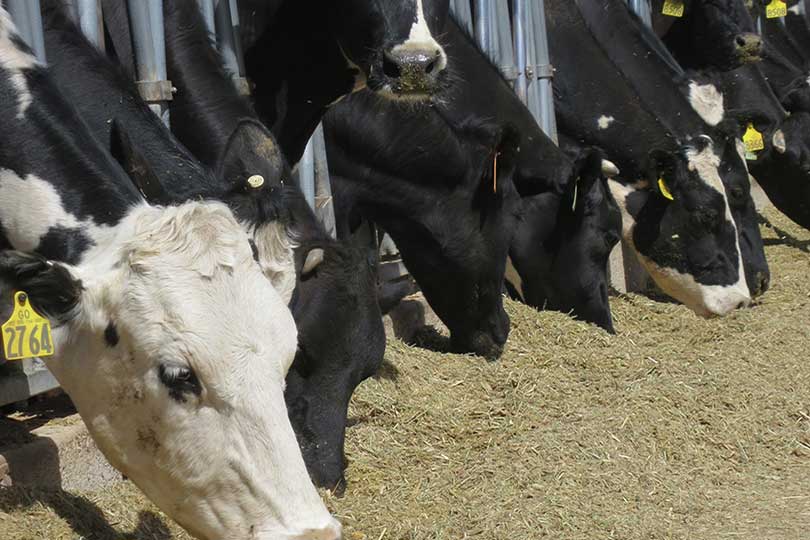By Jessica Domel
News Editor
The U.S. Department of Agriculture (USDA) has responded to the American Farm Bureau Federation’s (AFBF) request for emergency dairy assistance.
The department announced Tuesday it will buy about 11 million pounds of cheese from private inventories for USDA nutrition assistance programs and food banks across the country.
AFBF and 61 Congressmen sent letters to the USDA requesting emergency help for American dairy producers who face difficult financial times due to plummeting milk prices and farm cash receipts for milk sales.
“This commodity purchase is part of a robust, comprehensive safety net that will help reduce a cheese surplus that is at a 30-year high while, at the same time, moving a high-protein food to the tables of those most in need. USDA will continue to look for ways within its authorities to tackle food insecurity and provide for added stability in the marketplace,” Agriculture Secretary Tom Vilsack said in a statement.
Cheese purchases are estimated at $20 million.
USDA also announced it will extend the deadline for dairy farmers to sign up for the Margin Protection Program-Dairy (MPP) from Sept. 30 to Dec. 16.
“By supporting a strong farm safety net, expanding credit options and growing domestic and foreign markets, USDA is committed to helping America’s dairy operations remain successful,” Vilsack said.
Lower dairy exports, increased production in Europe, a cheese glut and expansion of the U.S. dairy herd is weighing on domestic milk markets.
“The decline in dairy farm revenue has led many dairy farm families to exit the industry,” AFBF President Zippy Duvall said. “In 2015, we lost 1,225 dairy farms—many of those small dairy farm operations where the average herd size is fewer than 200 milking cows.”
In his letter to Vilsack, Duvall noted the all-milk price fell to $14.50 per hundredweight in May—the lowest it’s been since 2009.
Dairy farm cash receipts from milk sales have fallen $16 billion since record highs in 2014.
USDA predicts a 35 percent drop from 2014 in the average milk price this year. The estimated $15.70 per hundredweight would be the second lowest level in the past decade.
While USDA-sponsored tools like MPP-Dairy are available, AFBF notes program costs and less attractive benefits have kept many farmers from signing up. Only 23,000 dairymen signed up for the program this year—most of them at catastrophic coverage only.
“The MPP-Dairy has already worked for farmers that bought in at more expensive levels than the catastrophic coverage. It has certainly helped so far in 2016, but the majority will have to wait for conditions to worsen even more before their elected level of coverage will benefit their farm,” Tracy Tomascik, associate director of Commodity and Regulatory Activities at Texas Farm Bureau, said. “This further highlights the need for the emergency assistance request.”
In early August, USDA announced an additional $11.2 million in MPP-Dairy assistance. Duvall said the assistance will help, but more can be done to help the nation’s dairymen.
In Texas, dairy farmers are shipping nearly 100 million gallons of milk now out-of-state, according to Darren Turley, executive director of the Texas Association of Dairymen.
“That amount of production is hurting our prices,” Turley said. “Our producers, like most other commodity producers, are feeling the squeeze of tighter prices. We’re starting to get back to quite a few year low actually, but it’s a really hard time for producers.”
Dairy farmers have put up a lot of feed, according to Turley, which is helping them quite a bit.
He says exports are a strong point for dairy, and they continue to increase their world presence in overseas markets that are looking for dairy powder.
“We are also seeing our cheeses and butters continue to move as well,” Turley said.
Texas is the sixth largest state in terms of dairy production with about 450 dairies.

